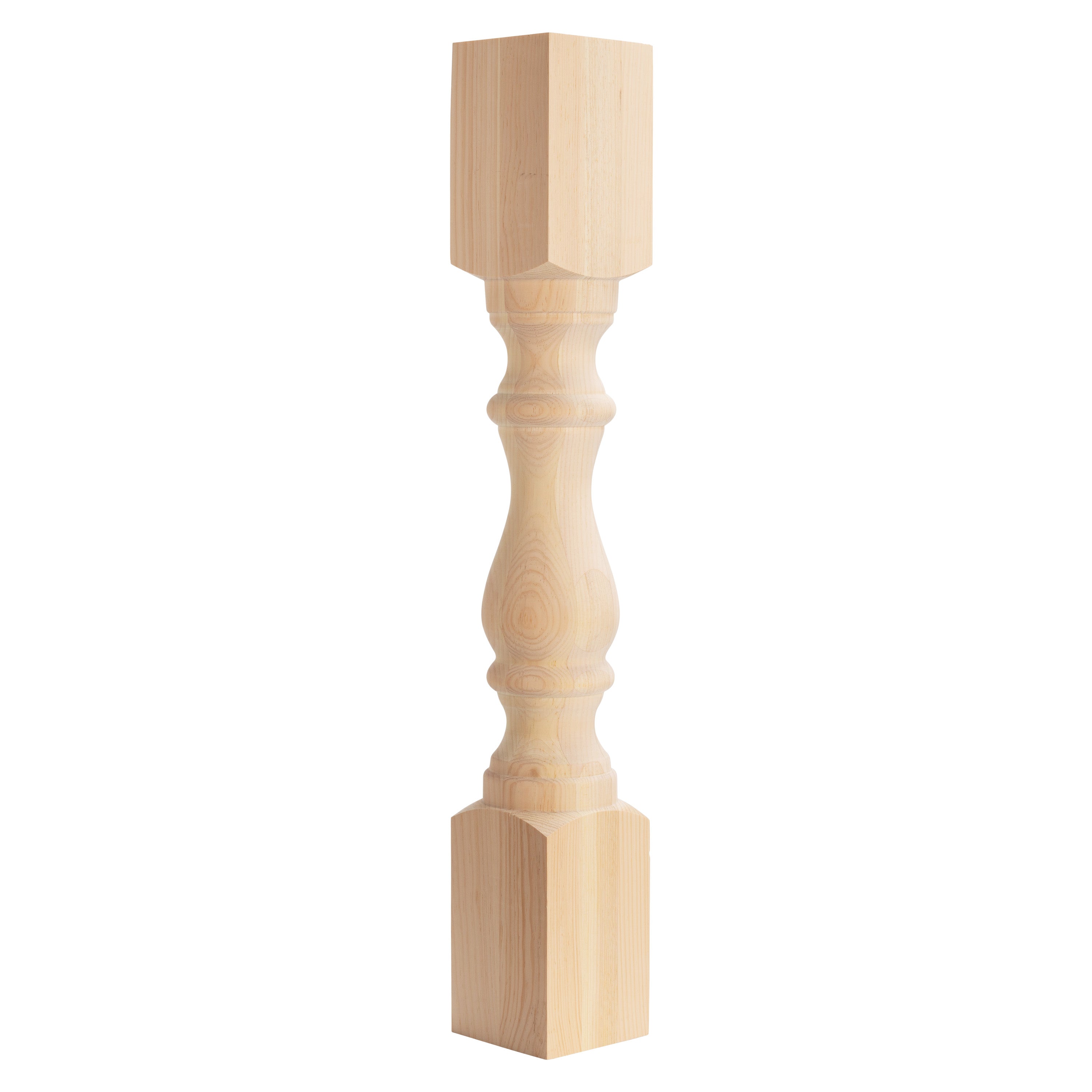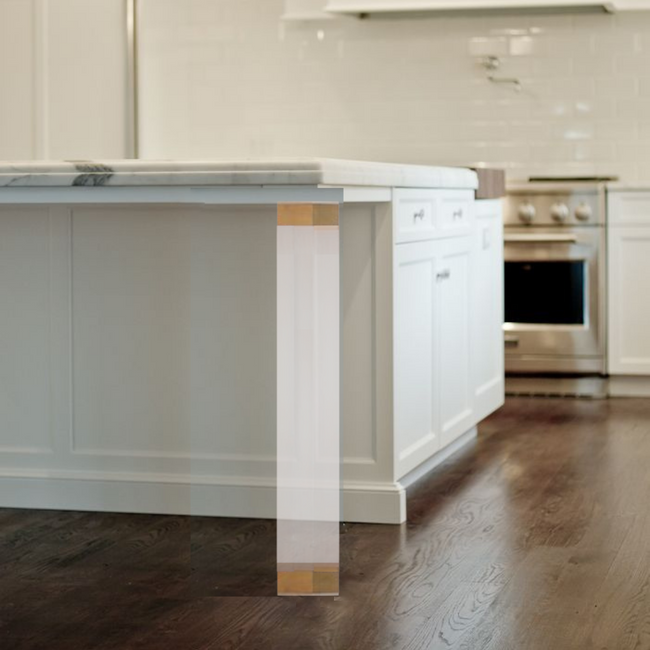A Comprehensive Guide to Selecting the Right Kitchen Island Leg
A Comprehensive Guide to Selecting the Right Kitchen Island Leg
Blog Article
Discovering the Essential Attributes of a Cooking Area Island Leg for Your Culinary Area
The kitchen island works as a central center in any kind of cooking room, and the option of leg design is pivotal in improving both its capability and aesthetic charm. Understanding the essential functions of kitchen area island legs-- consisting of product options, style styles, and security elements-- can significantly impact the general experience within the kitchen area. As we discover these elements, we will certainly reveal exactly how thoughtful personalization and accessories can boost your cooking area island from a mere energy to a striking focal point. What details factors to consider should be focused on to achieve this equilibrium?
Importance of Kitchen Island Legs
Kitchen island legs play an important function in both the performance and looks of a kitchen room. They not just support the weight of the island but likewise enhance the total layout, adding to the kitchen area's aesthetic appeal. The selection of legs can determine the style of the kitchen, be it modern-day, traditional, or rustic.
Functionally, durable and correctly made legs make certain security, allowing for the secure usage of the island for numerous tasks such as cooking, eating, or entertaining. Solid legs prevent moving and tottering, giving a dependable surface area for everyday tasks.
In addition, the elevation and placement of the legs can influence the comfort degree for those seated at the island. A well-considered elevation can accommodate bar stools or chairs, promoting a welcoming atmosphere for events.
Along with these useful considerations, kitchen area island legs can function as a centerpiece in the room (kitchen island leg). Attractive or distinctively created legs can boost the layout visual, making the island a focal point. Therefore, choosing the appropriate cooking area island legs is crucial for balancing kind and feature in any type of cooking area
Product Options for Legs
Choosing the suitable material for cooking area island legs dramatically impacts both durability and design. Typical material choices consist of steel, rock, and timber, each offering unique advantages.
Timber is a prominent choice because of its warmth and flexibility. It can be quickly customized to match different style styles, from rustic to contemporary. Hardwoods like oak and maple provide outstanding strength and durability, while softer woods can be much more susceptible to use and tear.
Metal legs are favored for their streamlined, modern visual. kitchen island leg. Stainless-steel and aluminum are not only robust yet likewise immune to rust and deterioration, making them ideal for kitchen environments. They can develop an industrial appearance and are frequently readily available in different finishes to match various other kitchen area aspects
Stone legs, such as granite or marble, add a component of deluxe and stability. While larger than other materials, they supply phenomenal resilience and can stand up to significant weight. Nonetheless, they may need additional support to make sure proper equilibrium.
Inevitably, the choice of product must align with both useful needs and the total layout vision of the kitchen room, making sure that the island legs enhance both utility and visual appeals.
Style Designs to Think About
What style styles should be thought about when choosing legs for a kitchen area island? The choice of leg design substantially influences the overall aesthetic of your culinary room. For a modern cooking area, minimalistic and sleek leg layouts, such as stainless steel or geometric shapes, can improve the his explanation modern charm, offering a tidy and minimalist look.
On the other hand, standard kitchens gain from timeless styles such as transformed or carved wooden legs, which add heat and character. These options usually include intricate details that complement classic furnishings. For a rustic atmosphere, consider legs made from redeemed wood or wrought iron, which bring an organic, natural quality to the area.
If you lean in the direction of an industrial theme, robust metal legs with a distressed coating may be suitable, providing an edgy yet innovative touch. In addition, farmhouse style kitchens can include beefy legs that stimulate a feeling of sturdiness and homeliness.

Height and Security Variables
The height and stability of a kitchen area island are crucial components that directly affect its capability and customer experience. A suitable kitchen area island leg must offer sufficient elevation to suit a range of tasks, from food prep work to informal dining. Typically, kitchen islands stand between 36 to 42 inches tall, aligning with conventional counter and bar elevations. This range makes sure convenience for individuals while performing numerous activities, hence improving the overall usability of the area.
Stability is similarly important, specifically as cooking area islands commonly work as centerpieces in culinary settings. A secure leg design decreases shifting and tottering, which can result in crashes or pain throughout use. Products such as solid wood, steel, or a combination thereof are typically utilized to achieve the necessary durability. Additionally, the leg's attachment to the island's discover this base should be safe and secure, ensuring long life and strength against the wear and tear of daily usage.
Modification and Accessories
Modification options and accessories for kitchen area island legs can dramatically enhance both the aesthetic charm and functionality of the space. Homeowners can pick from a variety of products, including rock, metal, and timber, permitting for seamless assimilation with existing cooking area you could try this out decoration. The selection of finish-- be it a natural discolor, paint, or powder coating-- further individualizes the appearance, making sure that the island complements the total style motif.
Along with product and coating, homeowners may additionally check out the unification of devices such as decorative braces, adjustable feet, or incorporated shelving. Brackets can use additional support while adding to a rustic or contemporary aesthetic. Flexible feet are especially useful for unequal flooring, making certain the island remains stable and level, which is essential for both safety and security and usability.

Verdict
In verdict, cooking area island legs serve a critical function in giving stability and enhancing the general visual of the cooking area. Customization alternatives and accessories can elevate the cooking area island, making it an unique focal point within the home.
The kitchen island offers as a central hub in any kind of culinary area, and the selection of leg style is critical in enhancing both its capability and visual allure. Comprehending the important functions of cooking area island legs-- including product options, layout styles, and security elements-- can dramatically influence the overall experience within the kitchen area.Kitchen area island legs play an essential function in both the performance and visual appeals of a kitchen area room.What style styles should be taken into consideration when picking legs for a kitchen island?In final thought, cooking area island legs serve a crucial role in supplying security and enhancing the overall aesthetic of the cooking area.
Report this page